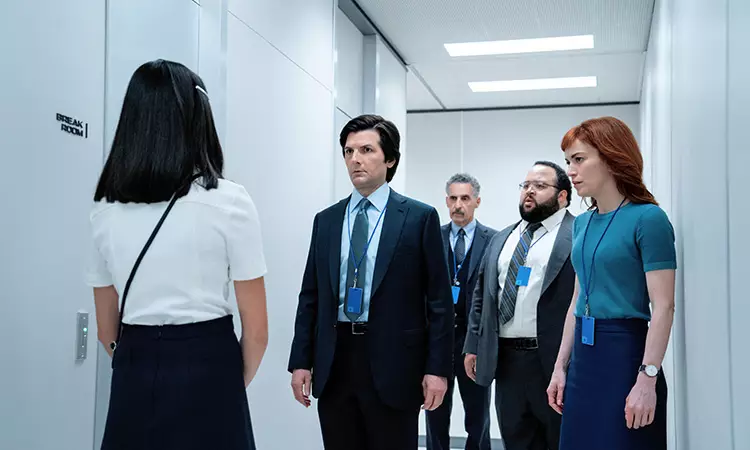In an age where work-life balance feels like an elusive dream, Dan Erickson, the creative force behind the Apple TV+ series “Severance,” gives us a glimpse into the darker aspects of this struggle. His journey began when he found himself wishing for a swift end to the workday—an impulse many who dread their jobs can relate to. Through this relatable yet unsettling desire, the foundational premise of “Severance” was born: what if employees could be severed from their working memories, leading to a complete disassociation from their professional selves? The idea raises profound questions about personal identity, autonomy, and the implications of purposely detaching one’s work life from their true self.
Erickson’s insight into his early dissatisfaction with work serves as a microcosm of a larger societal issue. How often do we find ourselves in jobs that we tolerate but do not find fulfilling? “Severance” cleverly dramatizes this existential dread by escalating it to a dystopian level, wherein the characters’ experiences at Lumon Industries border on the surreal. This narrative choice challenges viewers to confront uncomfortable truths about their own work-life situations.
At the heart of “Severance” lies the enigma of Lumon Industries—a company shrouded in mystery and strangeness. The commitment of its employees to forsake their memories is both shocking and thought-provoking. Comprised of distinct characters, including Mark Scout (Adam Scott) and his colleagues, the show cleverly uses their severance to explore themes of consent and agency. What compels someone to agree to such a radical and disconcerting procedure? By incorporating these personal dilemmas, Erickson creates an intricate tapestry of motivations and consequences, which are further magnified in Season Two.
The way Erickson articulates the characters’ backstories adds layers to their motivations. He approaches their personal histories not just as narrative conveniences but as essential elements that frame their decisions to undergo severance. This consideration enriches the storytelling, urging the audience to empathize with individuals who might otherwise seem merely like employees in a strange company.
As “Severance” moves into its highly-anticipated second season, there is a palpable sense of exploration both inward and outward. The intricacies of Lumon are not just a backdrop but serve as a significant plot device driving the characters’ arc and investigating deeper philosophical questions. Who are these people outside of their corporate roles? What do they stand to lose or gain by confronting their severed identities? The duality of the narrative allows space for both character development and world-building, as the audience is invited to reconcile the lives of the employees at Lumon with their ‘outie’ lives.
Erickson notes the challenge and joy of expanding this universe, as the show moves beyond the sterile walls of the office. The creator’s acknowledgment of ambiguity in the line between company and cult adds to the unsettling ambiance of the narrative. Many viewers find fascination in the peculiar elements, such as the goats—intrigued, yet puzzled about their purpose. This unpredictability keeps viewers engaged while simultaneously signaling a deeper commentary on corporate culture, blind loyalty, and the absurdities of modern work environments.
One of the most fascinating aspects of “Severance” is the vibrant community that has emerged around the series. The sheer volume of fan theories and creative expressions, including fan art, highlights the show’s impact beyond the screen. Erickson’s struggle with indulging in fan theories illustrates the tension between creator intent and audience interpretation. This dynamic speaks volumes about modern television; audiences are no longer passive consumers but active participants shaping the narrative landscape through discussions, theories, and creative efforts.
The vibrant engagement from fans allows the series’ exploration of themes such as separation, isolation, and the quest for identity to resonate on a broader level. In doing so, “Severance” tackles critical issues that extend beyond the confines of its story, shedding light on how personal struggles can reflect, and even inspire, societal dialogue.
Through “Severance,” Dan Erickson invites us to engage with the complexities of separation and identity in a world increasingly defined by our occupations. The show raises pertinent questions about our commitments, desires, and the lengths we might go to escape the monotony or discontent of work. As we eagerly await the unraveling of more intriguing mysteries, it becomes clear that the well-crafted world of “Severance” is one that echoes in the minds of many, compelling us to examine our own thresholds of disconnection from the realities of our lives. With each revelation, Erickson leads us on an exhilarating journey into the unknown, proving that sometimes the complexities of life are best explored through the lens of fiction.

